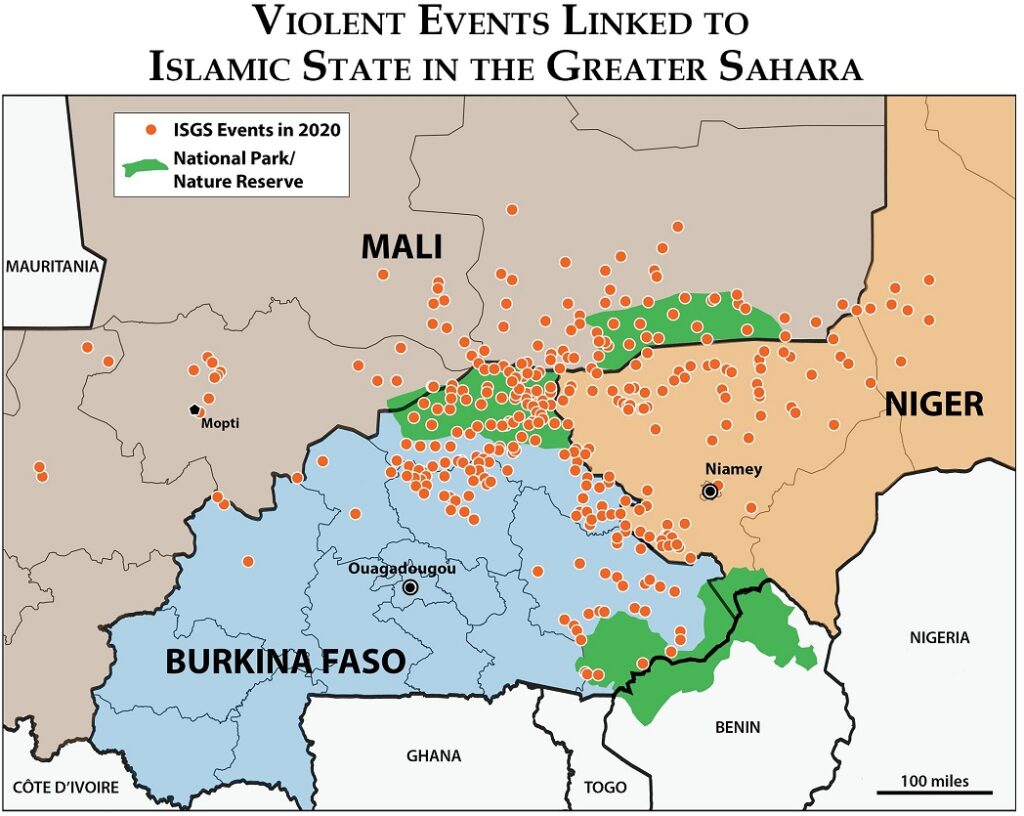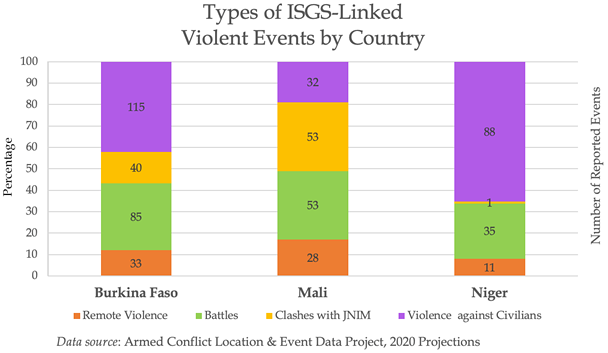
Violence linked to the Islamic State in the Greater Sahara (ISGS) more than doubled in the past year. Concentrated along the Burkina Faso-Niger-Mali border areas, ISGS events target civilians nearly half the time.
2020 has been the deadliest year of militant Islamist violence in the Sahel, with an estimated 4,250 fatalities, an increase of 60 percent from 2019. The Islamic State in the Greater Sahara (ISGS) is linked to more than half of these deaths.
Established in 2015 as an offshoot of other militant Islamist groups in the region, ISGS’s violent activity has surged across the borderlands of Burkina Faso, Mali, and Niger, an area known locally as Liptako-Gourma. The projected 524 violent events it is linked to in 2020 are more than double the figure from 2019.
Forty-two administrative districts (cercles in Mali, provinces in Burkina Faso, and départements in Niger) reported violent events attributed to ISGS in 2020. Of those, 11 districts reported events for the first time. Most of these 11 districts are located in central Mali, an area where the Macina Liberation Front (FLM) has been dominant.
ISGS targets civilians in 45 percent of its attacks, using violence to extort these communities.
In Niger, roughly two of every three ISGS attacks have targeted civilians. This is particularly the case in Tillaberi Region, which borders both Mali and Burkina Faso, and where ISGS is 10 times more active than other militant Islamist groups. This suggests that while ISGS is the dominant militant Islamist group in this area, it lacks popular support from local communities.
ISGS is particularly focused on controlling revenue-generating activities in Liptako-Gourma. It has targeted communities engaged in artisanal gold mining there and along commercial transit routes used for smuggling from the West African coast. Access to these revenues is likely a key factor in ISGS’ expansion.
As ISGS has expanded and increased its operations, presumed competition over revenues and territory has resulted in dozens of clashes between ISGS and JNIM-linked groups, with nearly half of these occurring in hubs for artisanal gold mining or illicit transit.
Militant Islamist groups operating in Liptako-Gourma rely on the rugged terrain afforded by partial nature reserves near the borders of Mali, Niger, and Burkina Faso. Further south, the safe haven offered by other reserves and national parks that comprise the W-Arly-Pendjari conservation area in parts of Burkina Faso, Niger, and Benin, also help militant groups avoid security forces and target nearby communities.